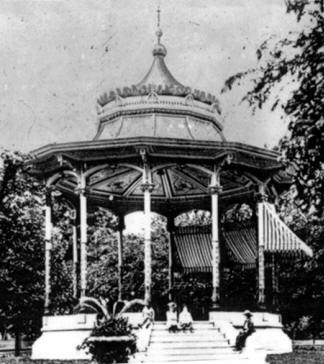Spring, 2013: Three new pieces
The second half of the 18th century, for the people of East Central Europe, was the time of the awakening of national consciousness. The leading force in the Hungarian enlightenment, the lesser nobility, also regarded as important the national character of the country's culture. A valuable kind of national music was the Hungarian dance music that flourished in the 18th century. The greater part of the repertoire naturally perpetuates the "Hungarian-style" pieces from the previous centuries (appearing in foreign collections too described as hungaricus, ungaresca, saltus hungaricus or Ungarischer Tanz), but beside these we can encounter contemporary European dances and entertaining instrumental pieces in almost every style.
The majority of the sources are collections compiled by non-professional musicians and intendedfor private music-making. In this work the composer uses melodies from the 18th-century Linus dance collection, in trioform, with harmonies and bass appropriate to that period. The musical fabric is rich in counterparts, the sound is mademore colourful with many kinds of percussion instruments. The register and rhythmic simplicity of the parts make the pieces easily playable even by music school pupils.
 At the turn of the 19th-20th century every town in Europe and overseas with any pretensions to style created in its centre a promenade, a street or square where people could stroll and meet. At a prominent spot on each promenade a music pavilion was erected, and nowadays nostalgia is causing these to be found again in more and more communities. There in the afternoons military, firemen's and student bands played music by Lehár, Fučik and Sousa. Waltzes, marches and pleasant, bittersweet melodies reminiscent of what are seen as the happy, peaceful days before the First World War and the worldwide Great Depression.
At the turn of the 19th-20th century every town in Europe and overseas with any pretensions to style created in its centre a promenade, a street or square where people could stroll and meet. At a prominent spot on each promenade a music pavilion was erected, and nowadays nostalgia is causing these to be found again in more and more communities. There in the afternoons military, firemen's and student bands played music by Lehár, Fučik and Sousa. Waltzes, marches and pleasant, bittersweet melodies reminiscent of what are seen as the happy, peaceful days before the First World War and the worldwide Great Depression.Árpád Balázs's work entitled Promenade evokes that period with undeniable sympathy and pays tribute to it, but in such a way that it becomes clear to everyone that this series of variations represents a 21st-century composer's reminiscences... The instrumentation itself shows that the composer is very familiar with the period he is referring to, and the possibilities of that time: in the relatively small pavilions there was room only for "double brass". The essentially complete woodwind section reveals that similarly to the works for wind band by the above-mentioned composers, this composition by Balázs is open-air music to be played sitting down. Music intended not for marching to, but for a promenade pavilion or rather a concert hall.Wherever Promenade is performed, its great wealth of melodies and extremely colourful instrumentation will ensure its success.
István Bogár's series of movements intended for youngsters is colourfully instrumented, evocative music, rich in melodic invention, in character it is most closely akin to Tchaikovsky's Nutcracker ballet music. In the opening movement (Little march), which is in trio form, little boys wearing paper shakos on their heads and carrying wooden swords play at soldiers. The following movement, Humming, is the only movement in the suite that is calm and in odd-numbered rhythm; in it the children gather flowers in their little baskets, and meanwhile hum pleasant tunes. The third movement (Funny game) is an exciting little three-part form including variations. It is a funny game, with its tempo sometimes speeding up, sometimes slowing down, but by the end really going wild. The title of the finale is Game of tag. The tiny formal sections and interludes in this lively, cheerful music are linked together by a recurring rondo theme, and the chase ends with a brief coda.
 Deutsch
Deutsch Español
Español Français
Français Magyar
Magyar Polski
Polski Română
Română Slovenský
Slovenský Slovenščina
Slovenščina 中文
中文